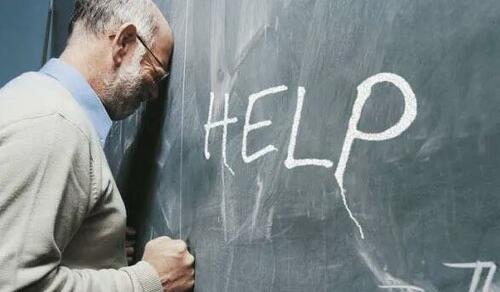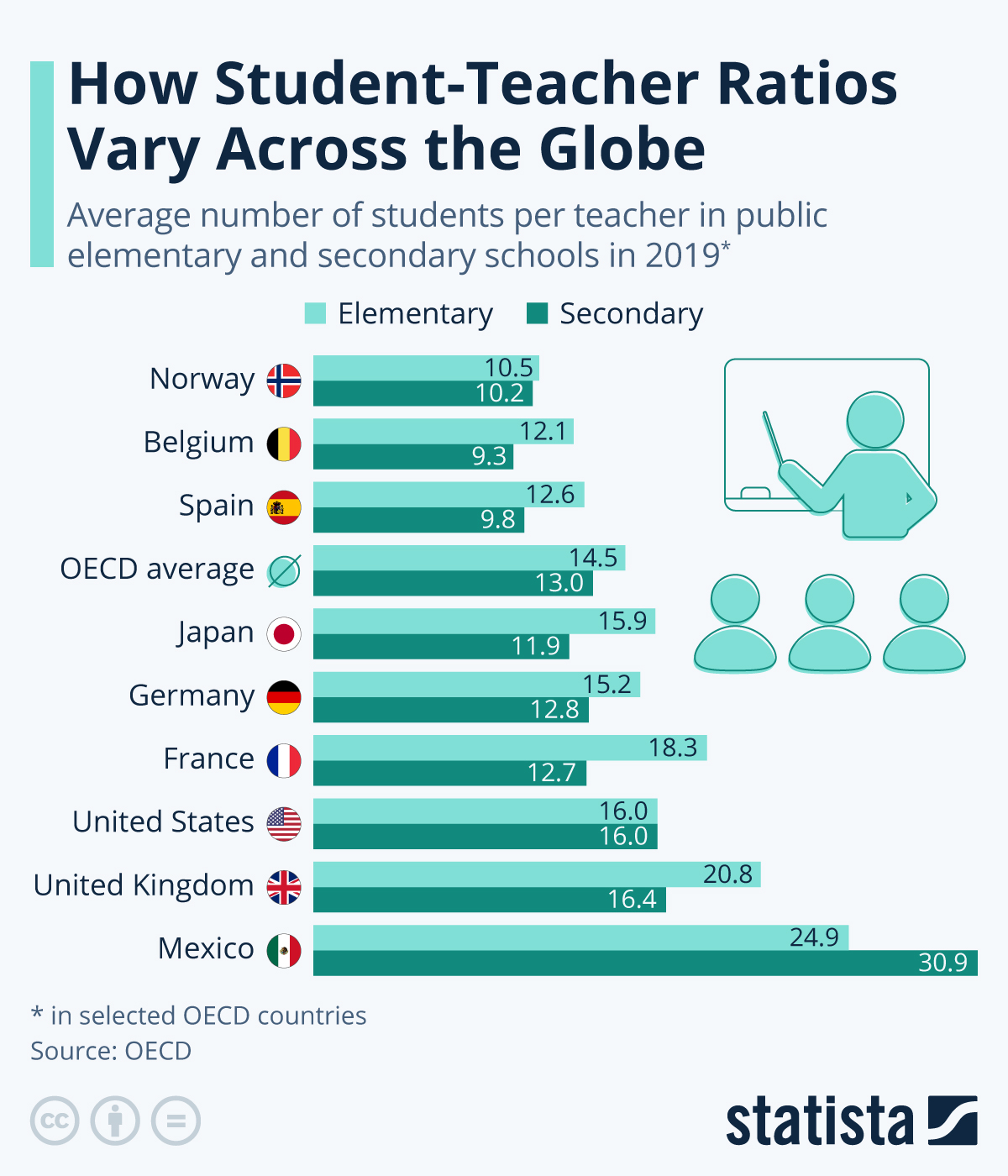How Student-Teacher Ratios Vary Across The Globe
Around the world, schools have been struggling to recruit teachers before the start of the school year.
As Statista’s Anna Fleck reports, it’s a phenomenon not only seen in the U.S. but also in Canada, Australia and in Europe, as low salaries, long hours, stress and burnout from the pandemic have led to a mass exodus from the profession.
According to NPR, it is children living in isolated rural areas and big city districts in the U.S. that are particularly impacted. This is because these schools may not be able to compete for teachers with the better-funded suburban schools that can offer higher pay.
The following chart shows how there are fairly significant differences in class sizes between countries.
You will find more infographics at Statista
Of the OECD countries listed, Norway and Belgium appear as examples of teachers working with smaller classes, with an average of around 10 pupils per teacher in public education (primary and secondary). By contrast, classes are fairly busy in Mexico. The country has the highest student-teacher ratio of the study, with around 24 to 27 students per teacher. In the U.S., there are usually around 15 students per teacher in both public elementary and secondary education.
Teachers warn that teacher shortages and increased class sizes could lead to a detrimental impact on pupils’ progress, attainment and behavior. This is because it makes it harder to provide adequate provision of learning resources to children, while teachers say they can’t meet the needs of all pupils under those circumstances.
While the student-staff ratio alone does not guarantee academic success, with teaching styles, teaching methods and extra-curricular choices also influencing factors, many teachers believe it is important.
Tyler Durden
Tue, 09/05/2023 – 22:40
via ZeroHedge News https://ift.tt/CtyT7D6 Tyler Durden

